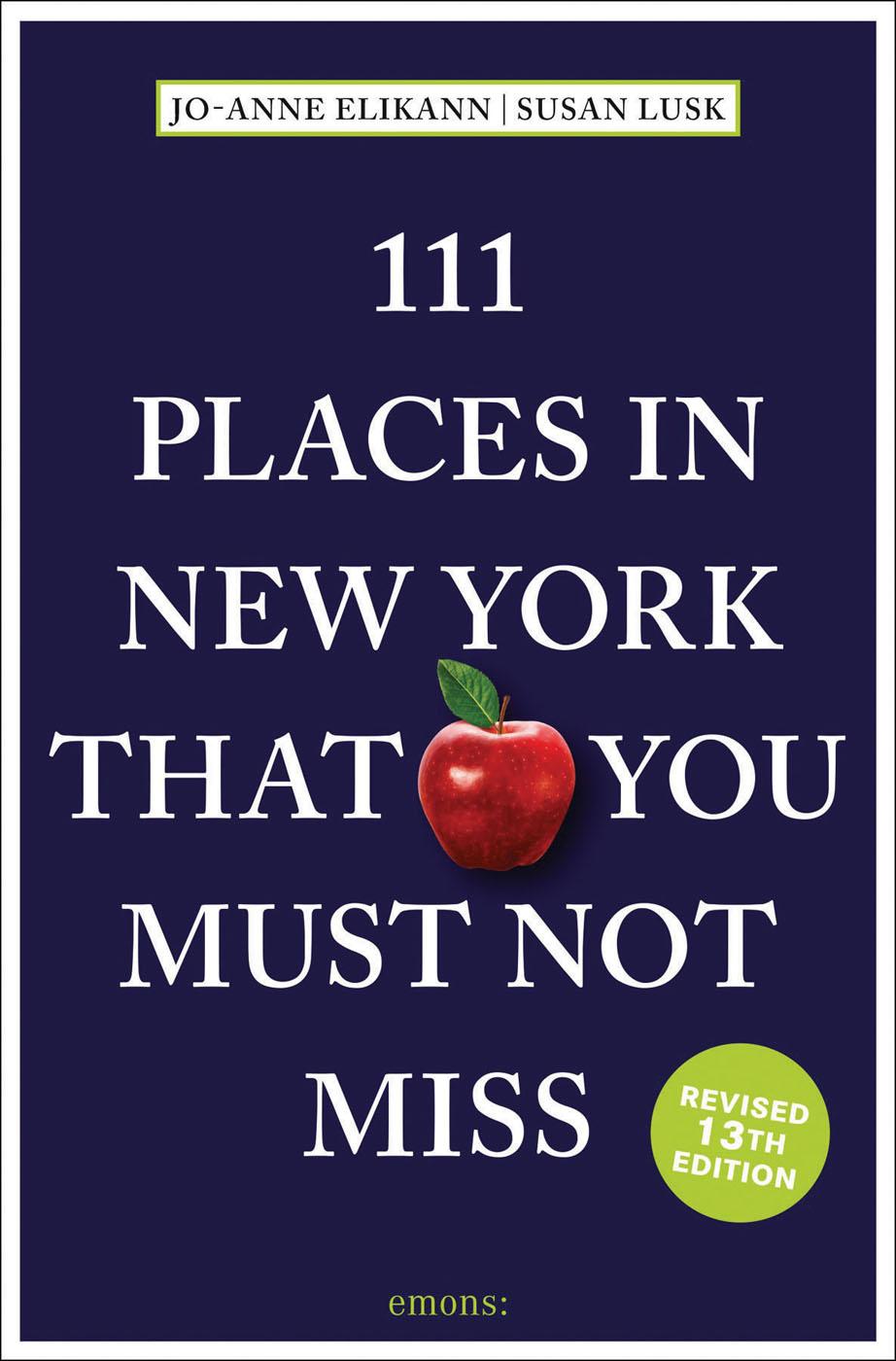

The Back Room
Tabooze in a teacup
This could be the only bar whose bouncer directs you to the door. “The Back Room? … down here!” He points to a metal gate with a Lower East Side Toy Company sign. Stairs take you down to a grim-looking alley. Rusty iron steps at the far end lead to a closed door. Be brave, go inside. It’s dimly lit but sparkly. Smiling, attractive people cluster and dance beside a roaring-twenties mirrored bar running along the front wall. Paintings of saucy ladies leer provocatively from the sidelines. Up some carpeted steps, a posh lounge oozes with period decor – red velvet settees, cocktail tables, and objets d’art elegantly arranged in the warm glow of a fireplace and twinkling chandeliers. With a nod to the days when booze was outlawed and consumed in secret, the Back Room’s potent cocktails are served ‘disguised’ in teacups, bottle beer in brown paper bags, drafts in coffee mugs, and shots in espresso cups.
Various trendy bars in the city pretend to be speakeasies. But this tucked-away night spot is the real deal – an authentic, clandestine drinking lounge that flourished during Prohibition. Back then you entered through the rear door of Ratner’s, a famous Lower East Side dairy restaurant. Open round the clock, Ratner’s blintzes and freshbaked onion rolls drew all-night crowds that included Al Jolson, Fanny Brice, and Groucho Marx, along with notorious gangsters like Bugsy Siegel, Lucky Luciano, and Meyer Lansky. After eating kosher delicacies they’d sneak into the back room for booze. Celebrities are still spotted here. Pearl Jam presided over the club’s 2005 reopening party; star-power patrons reserve bottle-service-only tables or throw lavish parties in its hidden Back Of The Back Room room.
Toast the twenties into the wee hours. Weekends are wild. Live jazz at Lucky’s Lounge Mondays requires a password at the door, and Poetry Brothels on the last Sunday of the month defy polite description.
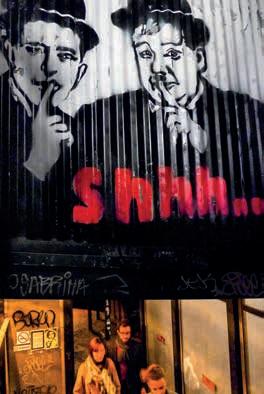

Address 102 Norfolk Street (between Delancey and Rivington Street), New York 10002, +1 212.228.5098, www.backroomnyc.com, info@backroomnyc.com | Getting there Subway: Essex St (J, M, Z), Delancey St (F), Grand St (B, D); bus: M 9, M 14, M 15, M 21 | Hours Tue – Thu 6pm – 2am, Fri & Sat 6pm – 3am, Sun & Mon 6pm – 1am | Tip Work up an appetite dancing, and then head to Datz Deli (69 Clinton Street) for a late Jamaican supper until 3am Thu – Sat.
Chess Forum
A place to check with a mate
Chess Forum is one of those camouflaged shops you could walk right past and never notice. It blends with the old tenement buildings on a charming Greenwich Village street, but its offerings are impressive.
This shop is the last of the old-time dedicated stores in a neighborhood once known as Manhattan’s “Chess District.” Just a few blocks south of the world-famous Marshall Chess Club (where 13-year-old Bobby Fischer won “the game of the century”) and the public chess tables of Washington Square Park, Chess Forum attracts chess buffs looking for a game, a new set, or just the companionship of fellow chess geeks.
Chess Forum was founded in 1995 to create an environment where chess-minded people could meet and exchange thoughts and ideas. In the clubby atmosphere, players can relax over a game while sipping tea, coffee, espresso, cappuccino, or soft drinks. You can even bring your own bottle of wine.
The range of clientele is impressive – from children to seniors, beginners to grandmasters, students to professors, artists, scientists, soldiers, police officers, ex-cons, and celebrities. Play and pay by the hour ($1/ hour for seniors). Chess Forum provides lessons for players at all levels and free Saturday training sessions for kids ages 4 – 12.
The retail section of the shop offers a wide selection of chess and backgammon sets, along with other board games like checkers, Go, dominoes, Chinese chess and checkers, cribbage, and mahjongg. Chess Forum also has a fine library of chess books for browsing and purchase.
Owner Imad Khachan recalls a favorite moment when, some years ago, rock superstar David Lee Roth came in regularly for chess lessons. A customer recognized him and asked if he was really ‘Diamond Dave.’ He responded, “In here I’m just another guy, and my name is David. But outside, and once I put on those sunglasses, I become Diamond Dave, and you cannot talk to me.”
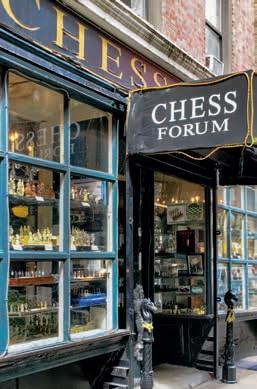

The Drag Show at Lips
Boys will be girls
Judging by its chic exterior masquerading as an exclusive men’s club –black canopy, elegant wood paneling, and beveled-glass doors framed by carriage lanterns – you’d expect Lips to be a sophisticated boîte where upper-crust patrons feast on foie gras and sip fine wine. Ah, but it’s a clever trick. This self-proclaimed “Disneyland of Drag” is really a glitzy palace of glamour and gaiety. Inside its classy entrance, instead of a dining room fit for a king you’ll encounter a raucous Las-Vegasmeets-Barbie-Dream-House full of gorgeous queens!
Curvaceous drag queen divas in extravagant, over-the-top, sequined and bejeweled costumes, with glam-fabulous makeup and spectacular coiffures impersonate legendary musical and theatrical icons, performing comedy, songs, and dance routines live on stage. They serve you food and drink (‘The more you drink, the better we look!’), engage in saucy banter, sit on your lap, and do their bosomy best to tickle your … um, fancy.
It’s always hilarious fun. Nightly shows like Drag Karaoke, Bitchy Bingo, Queens of Drag, Dinner with the Divas, and Superstar Sundays are crowd-pleasers, delighting a widely diverse audience of men and women – native New Yorkers, commuters from the boroughs and surrounding suburbs, and fun-loving tourists. Sunday’s showstopping Broadway Brunch, hosted by the fab-dazzling Ginger Snapt, is so popular it’s a good idea to book your table two weeks in advance! Come with a sweetheart, friends, or adventurous co-workers. Large groups are welcome, just call ahead to reserve. Lips is a sensational place for birthdays, bachelorette parties, or anything worthy of a memorable celebration.
Named-for-divas cocktails are featured on the drinks menu –like brain-freezing Yvonne Lamé Frozen Cosmo. The food is tasty, served in super-sized dinner and brunch portions. And while dinner’s delightful, the divas are even more delicious. Oh boy!


Address 227 East 56th Street (between Second and Third Avenue), New York 10022, +1 212.675.7710, www.lipsnyc.com | Getting there Subway: Lexington Av-53 St (E, M), 51 St (6), Lexington Av-59 St (4, 5, 6, N, R), Lexington Av-63 St (F); bus: M 1, M 2, M 3, M 4, M 15, M 31, M 57, M 101, M 102, M 103 | Hours Call or see website for specific daily show times. | Tip A world of glitter and glamour is at Tiffany’s Fifth Avenue flagship store (at 57th Street), but they don’t serve breakfast.
The Dream House
Frequencies in sound and light
Press the third-floor buzzer, climb a steep stairway. Remove your shoes. Incense lures you to a space bathed in warm magenta light. The room is bare, a few cushions scattered on a soft carpeted floor. Droning vibrations resonate within your body. The space is so infused with sound and light, you feel compelled to sit or lie down so your entire being, all your senses, can soak it in. A small shrine to the Hindu singer Pandit Pran Nath invites meditation at the front; windows masked in dark translucence glow at the back. Curlicues suspended from the ceiling slowly turn, casting mystifying shadows on the walls. Drawn into the sensations, you become immersed in a transcendent experience.
This environment at the MELA Foundation is a collaboration between avant-garde composer La Monte Young and his wife, visual artist Marian Zazeela. MELA, an acronym for Music, Eternal Light and Art, is also the Sanskrit word for harmonizing. Young’s “sound waveforms” derive from his lifelong study of harmonics, frequencies, and traditional Indian vocal technique. They combine seamlessly with Zazeela’s symmetrical compositions of vibrating light and hue. Detect subtle shifting colors, follow moving shapes, marvel at improbable three-dimensional shadows. A narrow hallway illuminated by Zazeela’s neon art leads to a smaller, even more intimate sound-filled, magenta-soaked space. Meditate, cogitate, recline, relax. Breathe. Dream House was conceived in 1969, intended as a shortterm art exhibit in Munich. It has often been reimagined in galleries across the world prior to its 1993 permanent installation in Tribeca, where the couple pioneered the loft movement in that then-grimy, now-thriving downtown area.
The Dream House website posts upcoming concerts, classes, and talks by Young & Zazeela, contemporary musicians, artists, philosophers, and spiritual teachers. Get in touch with your inner self.

Address 275 Church Street (between Franklin and White Street), New York 10013, +1 917.603.9715, www.melafoundation.org, mail@melafoundation.org | Getting there
Subway: Franklin St (1), Canal St (A, C, E, J, N, Q, R, Z, 6); bus: M 20, M 22, M 55 | Hours Wed – Sat 2pm – midnight | Tip Take a photo of FDNY Hook & Ladder 8 (14 North Moore Street), the firehouse that served as headquarters in Ghostbusters.
Mmuseumm
A microcosm of the macrocosm
What do a man’s shoe, phony international ID cards, rotelli pasta made of crickets, a bag of gummy-worms, and a videotape of sixties porn king Al Goldstein (Screw mag) have in common? Give up? These are only a handful of the quirky and evocative modern-age relics arranged with great care on shelves lining the walls of a defunct Tribeca freight elevator. Welcome to Mmuseumm, a tiny urban cubicle that bills itself as ‘the world’s smallest natural history museum.’
Its curator is designer and director Alex Kalman, son of artist Maira Kalman. Hanging out at New York’s world-famous museums from early childhood, Kalman drew inspiration from and came to understand the power of objects. In this spirit, he envisioned the creation of a space featuring found items – many donated by global ‘collectors’ – to engage visitors in an experience that’s an “exploration of the proof of our existence.” Here, every little object on display is believed capable of telling a much larger story about contemporary life, who we are, and the world we inhabit.
These artifacts are curated exactly because of their ordinariness. And where else could you encounter – in the same gallery – brandname product wannabes like Oleos cookies and Hoed & Shouders shampoo, personal items immigrants lost in the Arizona desert, things people were carrying when they were shot, homemade gas masks, dice fashioned by prisoners, gluten-free communion wafers, or ISIS currency?
The collection changes every season, providing opportunities to view individual exhibits of vastly disparate global ephemera. No more than three visitors at once fit inside the museum, and sharing your impressions with the others adds to the fun.
Public submissions are encouraged, so feel free to propose an exhibition of your prized vintage airline soap, paperclips, or bakery string. Your ‘stuff’ may well turn up in next year’s Mmuseumm exhibit!


Address 4 Cortlandt Alley (between Franklin and White Street), New York 10013, www.Mmuseumm.com, info@Mmuseumm.com | Getting there Subway: Franklin St (1, 2), Canal St (A, C, E, J, N, Q, R, Z, 6), City Hall (4, 5, 6); bus: M 9, M 20, M 22, M 55, M 103 | Hours Fri & Sat 11am – 6pm, always viewable through the windows, tours by appointment | Tip Have weekend brunch at Bubby’s (120 Hudson Street), famous for its house-cured bacon and seasonal choices of homemade pies.
Pastrami Queen
Love at first bite
It is said that you never forget your first love. And once you’ve tasted authentic New York pastrami you’ll never forget your first bite. You know greatness when you taste it. Just the thought of it could make you stop whatever you’re doing and fixate on the sheer sensual delight of a mouthful of tender, smoky, aromatic meat laced with garlic and crushed peppercorns. Exquisite fatty and lean slices piled high on fragrant rye bread. Ooooh!
A sandwich that was once available at every corner deli in Jewish neighborhoods on Manhattan’s Lower East Side, in Brooklyn and the Bronx, classic New York pastrami is now increasingly hard to find. Out-of-towners generally consider all New York pastrami to be excellent since it’s far superior to the processed meat-stuff bearing that name that’s sold everywhere else. So while it’s easy for New York delis to claim they’re the best (and a select group of well-known delis do serve very good pastrami), seasoned New Yorkers can taste the difference and agree that Pastrami Queen really nails it.
It’s a nondescript kosher-deli storefront on the Upper East Side, with a brightly lit counter and five tables that seat just sixteen patrons. It’s small and it’s not pretty, but the menu is expansive and seductive. Stand at the counter and watch the pros deftly slice your order of incomparable pastrami, or other deli delights – corned beef, brisket, tongue, turkey, roast beef, chicken, and chopped liver. They have luscious salads and sides, plus traditional kasha, knishes, potato pancakes, and matzo ball soup; crispy hand-cut fries, franks, and knockwurst. You can phone in an order for local delivery, stop by for take-out, or have Pastrami Queen cater your party.
But at least once, arrive early and sit at a table. In a flash, the waiter brings pickles and your hot pastrami sandwich. Grab it with both hands and prepare to fall in love.
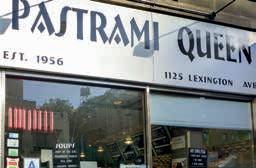
Address 1125 Lexington Avenue (between East 78th and 79th Street), New York 10075, +1 212.734.1500, www.pastramiqueen.com | Getting there Subway: 77 St (6); bus: M 1, M 2, M 3, M 4, M 15, M 72, M 79, M 101, M 102, M 103 | Hours Daily 10am – 9pm | Tip
An Upper East Side classic is Bemelmans Bar at the Carlyle Hotel, named for its whimsical murals by artist / illustrator Ludwig Bemelmans, who illustrated the beloved Madeleine books. Live jazz nightly (35 E 76th Street, New York, NY 10021).

SeaGlass Carousel
Swim with the fishes
Isn’t there something extraordinary about sea glass, the smooth, luminous morsels that glisten on sandy shores when the waves recede? They are tiny treasures that never cease to delight. Their muted pastel colors seem somehow illuminated from within. Capturing the beauty and wonder of the underwater realm that sea glass evokes – and just steps away from lower Manhattan’s harbor shoreline – SeaGlass Carousel transforms what could be just another merry-go-round ride into an endlessly surprising oceanic interlude.
Like something rising out of a Jules Verne story, the spiraled glass and steel nautilus shell that houses the carousel seems to have washed ashore in historic Battery Park where, aptly, America’s first public aquarium was established in 1896.
Inside this pavilion, you will not see garishly-painted horses or circus beasts sliding mechanically up and down poles. In fact, there is no center pole or hurdy-gurdy carnival music at all. Instead, you ride comfortably cradled inside a giant, dreamlike fish form whose glowing pastel hue magically illuminates and morphs as overhead projections simulate gently swirling underwater effects. Each fish has its own dedicated sound system playing a delightful mash-up of classical symphonies, jazz riffs, and Beatles tunes. And the fish move independently of each other in swim-like motions – up, down, sideto-side, a-twirl. Yet together as a school of fish, they join in a magical round-and-round undersea ballet.
The adventure is immersive and utterly enchanting, whether you choose to go during daylight hours, or prefer a luminescent ‘moonlight dip’ after dark.
Created by opera set designer George Tsypin, collaborating with theatrical lighting and audio geniuses, electricians and ride engineers, this choreographed, inspired, unpredictable, and emotional aquatic experience will transport you into uncharted waters.


Address Battery Park near State Street and Water Street entrance, NY 10004, +1 212.344.3491, www.seaglasscarousel.nyc | Getting there South Ferry (1), Whitehall Street (R), Whitehall Street – weekdays (W), Bowling Green (4, 5); bus: M 15, M 20, M 55 to South Ferry | Hours See website for seasonal hours | Tip Visit the Smithsonian’s National Museum of the American Indian – New York in the ornate Alexander Hamilton U.S. Customs House (1 Bowling Green, New York, NY 10004, www.nmai.si.edu/visit/ newyork). The museum features an extensive collection of Native American art, artifacts, and images. Find unique handcrafted jewelry, pottery, and textiles in the Gallery Store for truly authentic American souvenirs.

Urban Squats & Gardens
Otherwise occupied
Since the 1980s, Alphabet City – Avenues A, B, C, D in the East Village – has been a creative hotbed, a scene of fierce struggle, gleeful anarchy, and grassroots activism. While outsiders familiar with the musical Rent (written by squatter Jonathan Larson) got a stylized taste of its vie boheme, community insiders recently founded the Museum of Reclaimed Urban Space (MoRUS) to bear witness to its complex history. Tours are led by local guides with firsthand knowledge of once-abandoned buildings and vacant lots taken over by struggling musicians and artists to grow food and flowers. In a spirit of camaraderie, squatters effected changes that impacted the neighborhood, the city, and beyond.
MoRUS guides take you inside real squats, spaces considered uninhabitable (no running water, electricity, or heat) – where, over the years, artists, musicians, and social activists scavenged materials and pooled their talent, skill, and energy to carve out acceptable abodes: Bullet Space, an artists’ squat named for a brand of heroin and bullet holes in its boarded-up windows when squatters moved in; C Squat, musicians’ living quarters now sharing space with the museum; Umbrella House, a former squat that morphed into a resident-owned model of green, sustainable housing.
On the tour you visit guerilla gardens where community residents and families raise fruit, vegetables, herbs, and flowers in environments that encourage skill-sharing and experimentation. Thirty-nine gardens thrive in this neighborhood, surely the greatest concentration in the city. Pleasant refuges from the gritty streets, these leafy spaces are also incubators for collaborative innovation in urban agriculture and vital rallying places for social action. Thanks to many of Alphabet City’s successful – and once-radical – initiatives, things like dedicated bike lanes, recycling, and green construction have been adopted citywide.


Address Museum of Reclaimed Urban Space (MoRUS), 155 Avenue C (at 10th Street), New York 10009, www.morusnyc.org, info@morusnyc.org | Getting there Subway: 1 Av (L); bus: M 8, M 9, M 14A, M 14D, M 21 | Hours Thu – Sun noon – 5pm | Tip Tompkins Square Park, 1960s hippie hangout and scene of 1980s riots, hosts annual events: Halloween dog parade, Wigstock drag festival, and a Ginsberg Howl festival.
White Horse Tavern
Manhattan’s most haunted pub
Actor Charles Laughton played cribbage at the bar before this historic tavern became a watering hole for thirsty writers like James Baldwin, Anais Nin, Norman Mailer, and Allen Ginsberg. Jack Kerouac was thrown out so often, the words Jack Go Home were scrawled on the bathroom wall. Musicians Jim Morrison, Mary Travers (of Peter, Paul and Mary), and the Clancy Brothers downed countless pints here. A young Bob Dylan strummed his guitar and sang for tips.
The original Dylan, hard-drinking Welsh poet Dylan Thomas, is responsible for making the White Horse as infamous as it is famous. Thomas was a twice-daily regular who enjoyed its cheap libations and the easy camaraderie of fellow boozy literati, locals, and curious tourists who filled the barstools and tables of this popular hangout. One November night in 1953, the 39-year-old poet had his last drink here. After chugging eighteen shots of whiskey, he collapsed on the sidewalk, went into a coma at the Chelsea Hotel, then died at nearby St. Vincent’s Hospital. The White Horse was Dylan Thomas’ favorite haunt while he lived, and many believe that it’s still true – insisting his ghost frequently drops by after closing time for a pint (or three) at the corner table beneath his portrait.
This authentic 1880 pub’s proximity to the nearby Hudson River docks made it an early hangout of longshoremen. Before becoming a legendary literary lair, the White Horse was a haven for union organizers as well as the birthplace of the idea for the liberal Village Voice newspaper. Kitschy porcelain figures of white horses and other mementos decorate its walls and shelves. Drinks and pub grub remain cheap (cash only), and summertime sidewalk tables are perfect for leisurely people-watching. Visit on November 9th, the anniversary of Dylan Thomas’ death, and order from the menu what is billed as his last meal there. Then drink a toast to the poet’s ghost!
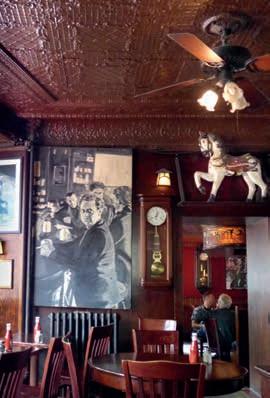

Address 567 Hudson Street (at West 11th Street), New York 10014, +1 212.989.3956, www.whitehorsetavern1880.com | Getting there Subway: Christopher St-Sheridan Sq (1), 14 St (A, C, E, 2, 3), 8 Av (L); bus: M 8, M 11, M 12, M 14, M 20 | Hours Mon – Wed 4pm – midnight, Thu & Fri 4pm – 2am, Sat noon – 2am, Sun noon – midnight | Tip Pubhop across town to another historic tavern, one of the city’s oldest: McSorley’s, established 1854. In 1970, women were finally admitted inside.
Winnie-the-Pooh
Friends forever – even longer
You may think he lives in The Hundred Acre Wood, but the real Winnie-the-Pooh is happily at home – with Kanga, Piglet, Eeyore, and Tigger – in the Children’s Center at the main branch of the New York Public Library.
Years before his reinvention by the Disney animation studios, this chubby stuffed teddy bear belonged to a real British boy named Christopher Robin Milne. His father bought the bear at Harrod’s of London in 1921 and gave it to him for his first birthday. Christopher called him Edward (the proper form of Teddy), but later changed that to Winnie, the name of a black bear at the London Zoo who was named after the city of Winnipeg, Canada. Christopher’s dad, playwright A. A. Milne, so enjoyed watching his son play with Winnie and his stuffed animal pals that he made up stories about them to tell the boy at bedtime. In these tales, a young lad named Christopher Robin had adventures with Winnie-the-Pooh and his friends in a forest that resembled the woods near the Milne’s country house. As the stories grew longer, poems were added, and illustrator E.H. Shepard made drawings for what became four beloved books: When We Were Very Young (1924), Winnie the Pooh (1926), Now We Are Six (1927), and The House at Pooh Corner(1928). They were an instant sensation. Beginning in 1947, when his stories reached the United States, the real Winnie toured throughout the country, frequently returning to England. In 1987, to the enormous delight of Americans and the outrage of many British, American publisher E. P. Dutton donated him to the New York Public Library. A member of Parliament tried to have him brought back to England – to no avail. Pooh’s adventures are translated into many languages and the endearing character has captured the hearts of children of all ages around the world. Visit Winnie and a 1926 photo of the real Christopher and his dad. If you can, do bring a pot of ‘hunny.’
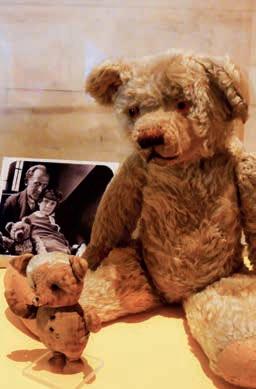
Address Children’s Center at NY Public Library, Fifth Avenue at 42nd Street, New York 10018, +1 917.275.6975, www.nypl.org | Getting there Subway: 42 St-Bryant Park (B, D, F, M), 5 Av (7), Grand Central (4, 5, 6); bus: M 1, M 2, M 3, M 4, M 5, M 7, M 42 | Hours Mon, Thu – Sat 10am – 6pm, Tue & Wed 10am – 8pm, Sun 1 – 5pm | Tip Over 15 million items reside in the NYPL main branch. All exhibits are free and as impressive as many in the museums. Visit the Map Room, Menu Collection, and a genuine Gutenberg Bible.

Jo-Anne Elikann was born in Brooklyn, grew up in Queens, and lives in Manhattan. The day her parents let her ride the subway she fell hopelessly in love with the city, and has feasted on its smorgasbord of extraordinary experiences ever since. A freelance writer, artist, and photographer whose proudest achievement has been raising six kids in a NYC apartment, her career includes stints as an art /antiques cataloguer, director of a children’s art center, partner in a graphics firm, and healthcare administrator. She’s a die-hard New Yorker and lifelong explorer of its nooks, crannies, and endless power to amaze.

Susan Lusk has had a long career in publishing as an art director, magazine designer, book editor, author, photographer, and indie publisher. She co-authored 111 Shops in New York You Must Not Miss with her partner Mark Gabor. Born and bred in New York City, she never tires of exploring it to unearth new little gems hiding in plain sight.
The information in this book was accurate at the time of publication, but it can change at any time. Please confirm the details for the places you’re planning to visit before you head out on your adventures.
